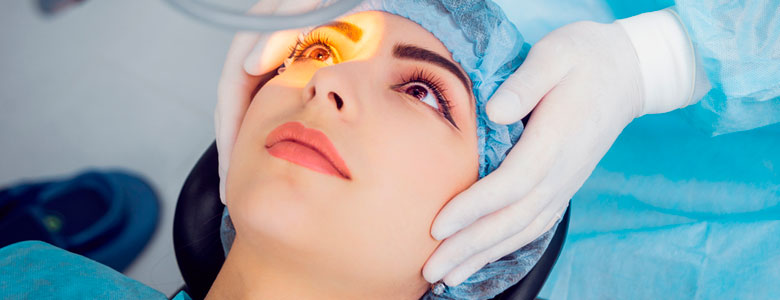
Challenges Linked with Refractive Surgery for Myopia and Astigmatism
Refractive surgery is a widely used surgical procedure aimed at correcting visual impairment caused by refractive errors such as myopia, hyperopia, and astigmatism. Myopia and astigmatism are two of the most common refractive errors that people experience. The main objective of refractive surgery is to improve visual acuity and reduce the dependence on glasses or contact lenses. However, refractive surgery for myopia and astigmatism is not without its challenges.
Myopia and Astigmatism
Before we delve into the challenges linked with refractive surgery for myopia and astigmatism, it’s essential to understand what these refractive errors are. Myopia, also known as nearsightedness, is a condition in which a person can see nearby objects clearly, but distant objects appear blurry. Astigmatism is a condition in which the cornea is irregularly shaped, resulting in blurry or distorted vision at any distance. Both of these refractive errors can be corrected with the help of refractive surgery.
Challenges of Refractive Surgery for Myopia and Astigmatism
Incomplete Correction
One of the main challenges of refractive surgery for myopia and astigmatism is incomplete correction. In some cases, the surgery may not be able to fully correct the refractive error, resulting in residual myopia or astigmatism. This can lead to the need for additional surgery or the continued use of glasses or contact lenses.
Overcorrection
Another challenge linked with refractive surgery for myopia and astigmatism is overcorrection. Overcorrection occurs when the surgery corrects the refractive error too much, resulting in hyperopia or farsightedness. Overcorrection can be more challenging to correct than under-correction and may require additional surgery.
Dry Eyes
Dry eyes are a common side effect of refractive surgery, and they can be a significant challenge for patients. Dry eyes can cause discomfort, redness, and irritation, and can even affect the success of the surgery. Patients who experience dry eyes after refractive surgery may need to use eye drops or other treatments to manage the condition.
Regression
Regression is another challenge linked with refractive surgery for myopia and astigmatism. Regression occurs when the effects of the surgery gradually wear off over time, and the patient’s vision returns to its pre-surgery state. Regression can occur in up to 20% of patients who undergo refractive surgery and may require additional surgery.
Complications
Like any surgical procedure, refractive surgery for myopia and astigmatism comes with the risk of complications. Complications can include infection, inflammation, corneal ectasia, and other serious conditions. While these complications are rare, they can be challenging to manage and may require additional surgery or treatment.
High Cost
Refractive surgery for myopia and astigmatism can be expensive, which can be a significant challenge for many patients. The cost of the surgery can vary depending on the type of surgery, the surgeon’s experience, and the location of the clinic. Insurance may not cover the cost of the surgery, making it inaccessible for many patients.
Unsuitable Candidates
Not all patients are suitable candidates for refractive surgery. Patients who have certain medical conditions, such as diabetes or autoimmune diseases, may not be suitable candidates for the surgery. Patients who have a high refractive error or thin corneas may also not be suitable candidates for refractive surgery.
Conclusion
Refractive surgery is a popular surgical procedure aimed at correcting visual impairment caused by these refractive errors. However, as with any surgical procedure, it comes with its own set of challenges. Incomplete correction, overcorrection, dry eyes, regression, complications, high cost, and unsuitable candidates are some of the significant challenges and astigmatism.
Patients who are considering refractive surgery must be aware of these challenges and discuss them with their surgeon before making a decision. Patients should also ensure that they choose a qualified and experienced surgeon who can help manage any challenges that may arise during or after the surgery.
Visit DocMode for Courses and lectures
